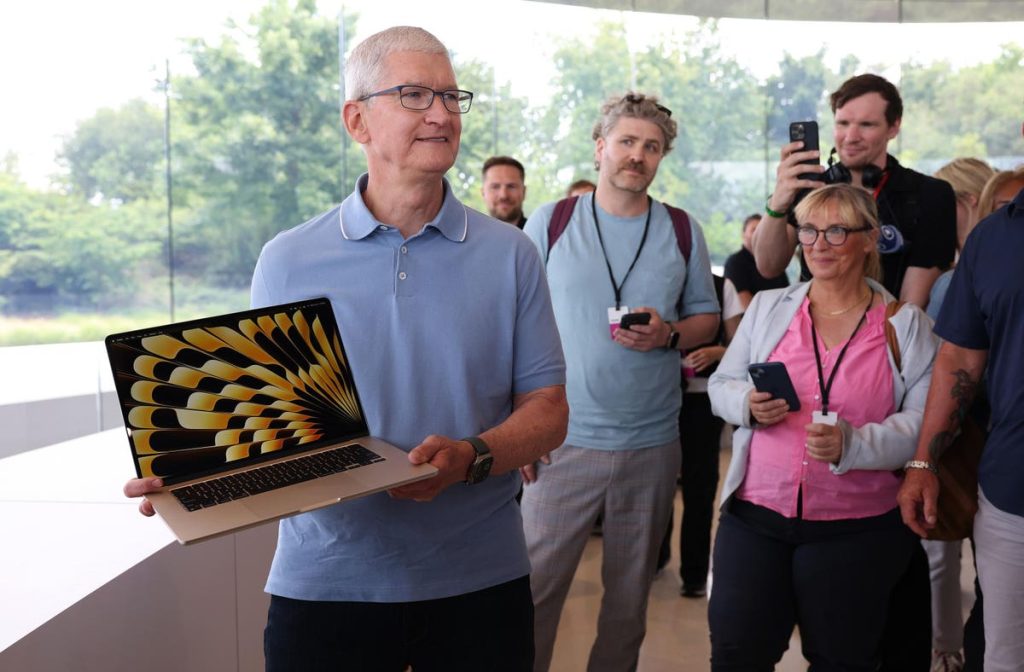Updated June 13th: article originally posted June 11th.
As expected, Apple released a new MacBook Air at its Worldwide Developer Conference this month. As expected, it is the first consumer-focused MacBook to ship with both Apple Silicon and a 15-inch screen. And as expected, it’s perhaps not as new as you might expect, given the high-profile event it was launched at.
But it’s more than enough for most consumers to forget about the MacBook Pro.
Update: Sunday June 11th: For all of Apple launching a new MacBook Air, there’s very little new about the consumer laptop. The larger display will sell those needing a pure productivity upgrade, but for others who recognize this is last year’s model released this year, they will want more. The good news is that Apple already has a plan for them with the M3 chipset.
The bad news is we’re not going to see it for some time, Mark Gurman notes the real specs upgrade to the MacBook Air family will not be happening until 2024.
As it stands, any MacBook Air will come with the 5nm-based M2 chipset announced in June 2022. That was widely seen as an uprated M1 chip. The next big step will be the M3 chipset which will use a 3nm process, which should allow more performance, longer battery life, and a genuine upgrade to the MacBook Air platform.
But for some, the larger display is all the justification they need to invest in a macOS laptop today.
Update: Tuesday June 13th. Speaking to Tom’s Guide’s Mark Spoonauer, Kate Bergeron (Apple VP of hardware engineering) and Laura Metz (Apple Mac product marketing team) have discussed the design choices behind the new MacBook Air. Naturally, the larger display is part of the conversation:
“And as we look at the market landscape, we’ve got a huge population of PC laptops that have 15-inch displays. And so we know that we’ve got users who don’t necessarily need the performance of a MacBook Pro to get that larger display. They just don’t necessarily need all that capability and performance, and so with Apple silicon it was a great opportunity to look at this. “
This is a great answer to the question of “why” but fails to answer the bigger question of “why now?” especially when Bergeron and Metz acknowledge the popularity and longevity of larger displays on Windows PCs… which have been an option for consumers for decades.
The new MacBook Air has one distinctive trait over the rest of the MacBook Air family, namely the 15.3-inch LED/IPS screen. Everything else in the package is exactly the same as the 13.6-inch MacBook Air launched at WWDC 2022. Arguably Apple has simply held back the model with the larger display for twelve months so it can display some artificial momentum with the Air family.
Putting aside the awkward timing of its release, the MacBook Air strips away one of the biggest arguments for consumers to skip over the MacBook Air and be unsold to the MacBook Pro, and it’s the size of the screen. Apple’s two sensible MacBook Pro models sport 14-inch and 16-inch screens, which offer more digital real estate than the MacBook Air family (at least before WWDC). They also provide a ridiculous step-up in power with the M2 Pro and M2 Max chipset.
That power costs money. Like countless Macs throughout history, you had to buy a higher specced machine if you wanted a larger display.
The 15-inch MacBook Air steps outside that pattern. It offers the same specs as the 13-inch MacBook Pro, and while I will argue that releasing the same specced laptop one year after its smaller version is disappointing, it does offer an obvious value proposition. You can buy the 13-inch MacBook Air at the newly discounted price of $1099 or for an extra $200 and get the 15-inch model.
Thanks to the flexibility of Apple Silicon, even the base M2 chipset offers more than enough performance for the regular consumer, and there’s certainly enough to do content creation and software development to a good standard. Those that need significant levels of power and performance have the two sensible MacBook Pro models, which are looking more like portable workstations than high-end laptops by the day.
The MacBook Pro used to be the only choice for those needing a larger macOS laptop. Three years after the debate of Apple Silicon promised to change the laptop market, Apple has finally decreed that you don’t need to buy a more powerful laptop to get a larger display.
It’s taken far too long to reach this point, but we’re here now.
Now read the latest Mac, iPhone, and WWDC news in this week’s Apple Loop weekly column…
Read the full article here










